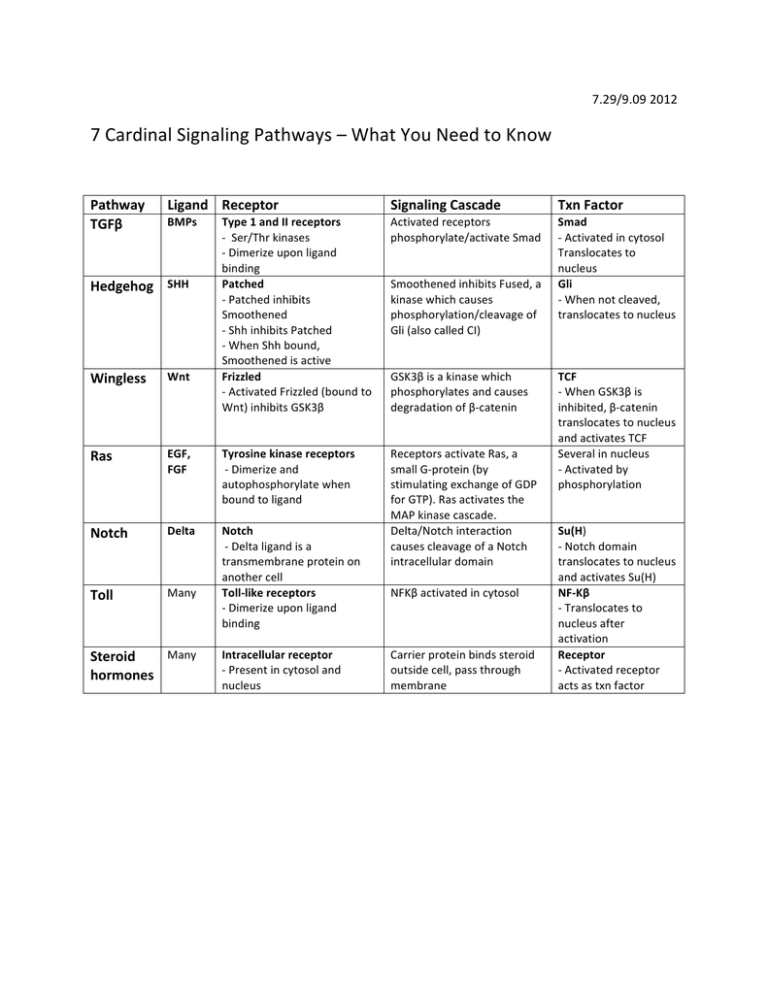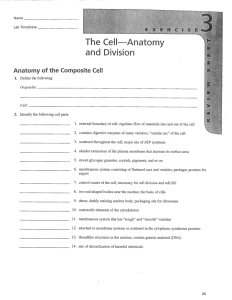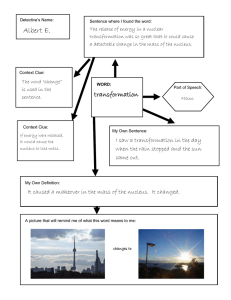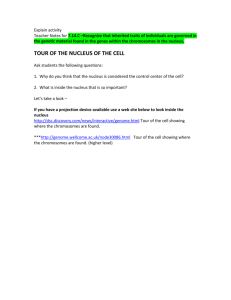Document 13540199
advertisement

7.29/9.09 2012 7 Cardinal Signaling Pathways – What You Need to Know Pathway TGFβ Ligand Receptor Signaling Cascade Txn Factor BMPs -­‐ -­‐ Type 1 and II receptors -­‐ Ser/Thr kinases -­‐ Dimerize upon ligand binding Patched -­‐ Patched inhibits Smoothened -­‐ Shh inhibits Patched -­‐ When Shh bound, Smoothened is active Frizzled -­‐ Activated Frizzled (bound to Wnt) inhibits GSK3β Activated receptors -­‐ phosphorylate/activate Smad -­‐ Smad -­‐ Activated in cytosol Translocates to nucleus Gli -­‐ When not cleaved, translocates to nucleus Receptors activate Ras, a small G-­‐protein (by stimulating exchange of GDP for GTP). Ras activates the MAP kinase cascade. Delta/Notch interaction causes cleavage of a Notch intracellular domain Hedgehog SHH -­‐ -­‐ -­‐ Wingless Wnt Ras EGF, FGF Tyrosine kinase receptors -­‐ Dimerize and autophosphorylate when bound to ligand Notch Delta Toll Many Notch -­‐ Delta ligand is a transmembrane protein on another cell Toll-­‐like receptors -­‐ Dimerize upon ligand binding Many Steroid hormones Intracellular receptor -­‐ Present in cytosol and nucleus Smoothened inhibits Fused, a -­‐ kinase which causes phosphorylation/cleavage of Gli (also called CI) GSK3β is a kinase which phosphorylates and causes degradation of β-­‐catenin NFKβ activated in cytosol Carrier protein binds steroid outside cell, pass through membrane TCF -­‐ When GSK3β is inhibited, β-­‐catenin translocates to nucleus and activates TCF Several in nucleus -­‐ Activated by phosphorylation Su(H) -­‐ Notch domain translocates to nucleus and activates Su(H) NF-­‐Kβ -­‐ Translocates to nucleus after activation Receptor -­‐ Activated receptor acts as txn factor MIT OpenCourseWare http://ocw.mit.edu 7.29J / 9.09J Cellular Neurobiology Spring 2012 For information about citing these materials or our Terms of Use, visit: http://ocw.mit.edu/terms.







